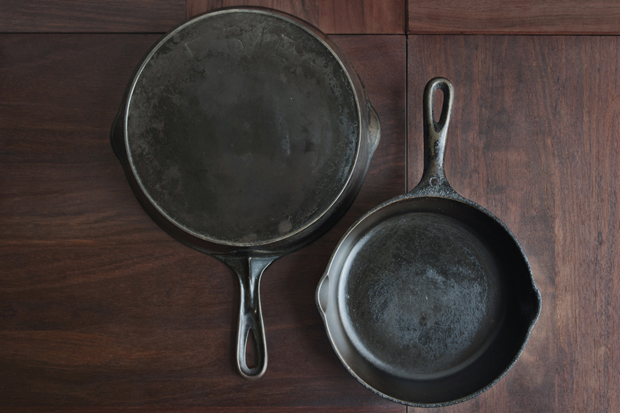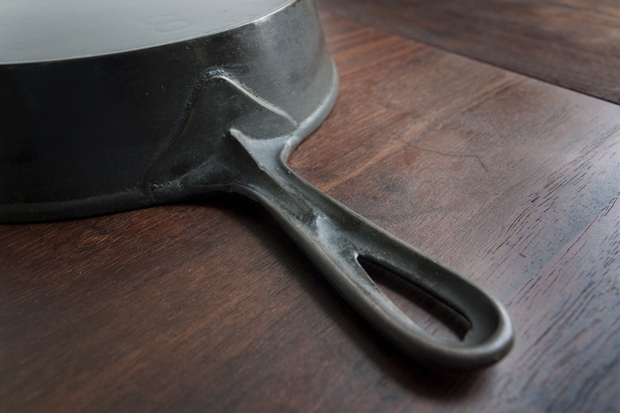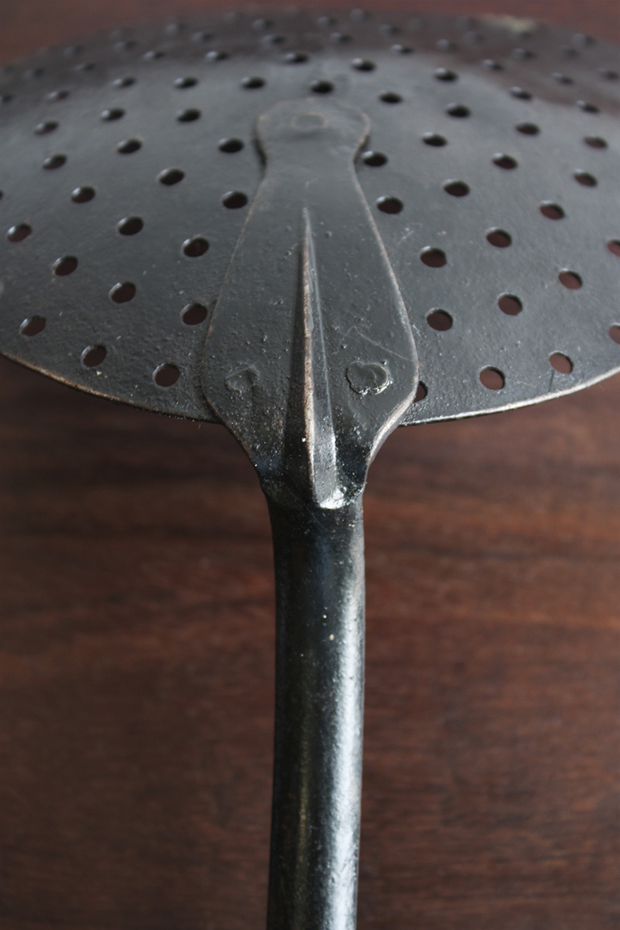We have developed a serious fixation on cast iron over here, inspired by some holiday product plans already in the works. In order to become experts on this impressive metal, we have learned about its properties, what makes it unique, what differentiates it from other metals and why the old stuff is better than the new.
The first fascinating tidbit is in relation to cast iron’s carbon content. This is what cast iron’s strength relies upon and, more importantly, its natural carbon surface is completely renewable. This makes the life span of the cast iron potentially infinite. Its maintenance and restoration is done through the process of seasoning. But more on that later.
Cast iron is a preferred metal not only in the kitchen, but also in architecture and structural engineering, tools, armoured ships, and implements of battle. It replaced wrought iron as the favorite for decorative architecture and engineering because cast iron only required a reaching of its melting point in order to remove its impurities, compared to the high-maintenance process of purifying wrought iron.
Compared with other popular kitchenware, cast iron can handle heat better than steel, due to its higher melting point, and it also will not chip away over time as porcelain will.
And finally, why they just don’t make ‘em like they used to: pre-WWII cast iron is thinner and lighter in weight and can therefore cook at lower temperature settings. The main difference, however, is in cast iron’s texture. Older cast iron is much smoother, and does not have the pock marks that you will see in today’s cast iron. This is largely due to the purity of 19th century cast iron, mainly constituted by iron ore found near Lake Erie. Today’s cast iron is unfortunately composed of many metals, and the machining that used to be done has also stopped, in order to cut back labor costs.
And there you have it. Stay tuned for our very own selections of antique cast iron cookware and more information on how to keep them in tip-top shape.



